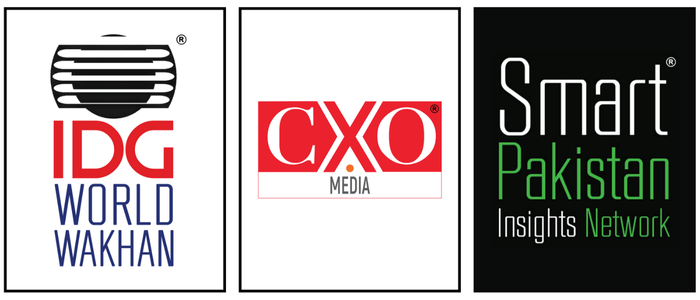In October 2025, the World Economic Forum released what felt less like a newsletter and more like a mirror—reflecting not the future of AI, but the disquiet in its present. It chronicled how humanity is slipping from experimentation into dependency, how the world’s most used chatbot is now the world’s most misunderstood co-worker. ChatGPT, according to OpenAI’s own study summarized by the Forum, is no longer just an assistant; it is a habit. More than seventy percent of its messages now come from non-work contexts—tiny fragments of daily life, curiosity, procrastination, self-soothing, even loneliness. The workplace, where the AI revolution was supposed to make the greatest dent, is instead becoming its slowest learner. And within that paradox sits a new word the WEF did not coin but might have canonized: workslop.
Workslop is what happens when machines mimic competence. When text reads well, but means little. When a PowerPoint deck looks stunning, but no one can recall who actually thought it through. It is the synthetic sheen of productivity that eats away at trust. The WEF report quotes surveys in which forty percent of employees in the United States say they have received “AI-authored material” that seemed fine but fell apart under scrutiny. Multiply that by millions of office workers, by hours lost, by decisions deferred, and you begin to see why the age of automation is not an age of efficiency, but of duplication. One human drafts a query; one model produces a response; another human must now verify the response; and in that recursive loop, meaning dissolves.
For Pakistan, where bureaucratic literacy and institutional precision are already fragile, this phenomenon lands with different weight. Imagine a provincial secretary using AI to write a legal summary or a young analyst feeding fiscal data into a model without oversight. The illusion of competence is powerful, and the machinery of governance slow to check it. Workslop, in such systems, would not just waste time—it would codify error. It would make mediocrity look majestic. And when policy itself becomes predictive text, the consequences go beyond inefficiency; they become existential.
The WEF’s October briefing did not dwell only on the workplace. It turned quickly toward governance—toward the missing architecture around the machines. It introduced a new playbook titled Advancing Responsible AI Innovation, aimed at helping governments and companies close what it calls the “implementation gap”: the distance between saying you believe in ethical AI and actually embedding it in your pipelines. Around the same time, the United Nations announced a Global Dialogue on AI Governance, and an International Scientific Panel on AI modeled loosely on the IPCC. Both initiatives seek to standardize how nations measure risk, bias, and accountability. But the race for governance, like every other race in technology, risks being won by those who can afford to define its terms. For much of the Global South, the gap is not only technical but representational. You cannot sit at the table of AI rule-making if you have not built a table of your own.
Meanwhile, the physical world of AI—the part no one likes to romanticize—is mutating at astonishing speed. The WEF report reads almost like a dossier on infrastructure imperialism. There’s Stargate, the OpenAI-Oracle-SoftBank alliance planning five new hyperscale data centers in the United States with a projected capacity of seven gigawatts. There’s Nebius, raising billions to build neutral cloud infrastructure, while NVIDIA locks in decades-long chip contracts. Greece, improbably, appears as a testbed for ChatGPT Edu, integrating generative AI into national schooling. Each development underscores what many still refuse to grasp: that artificial intelligence is not a software revolution but a hardware conquest. The frontier is measured in megawatts, not metaphors. Whoever controls compute controls cognition.
In Pakistan, this reality is emerging slowly but unmistakably. The federal government, desperate for investment and digital credibility, has already reserved two thousand megawatts of electricity for AI data centers and cryptocurrency miners—an attempt to convert idle energy into digital rent. On paper it is pragmatic; in practice it is perilous. The danger is that Pakistan becomes a node of outsourced compute, not a participant in knowledge creation. We may host the servers, but not the sovereignty. The only antidote to that future is building local capacity: small modular data centers tied to universities, localized foundational models in Urdu and regional languages, and public-private alliances that keep data onshore.
When Pakistan announced its National AI Policy 2025 earlier this year, it marked an inflection point. The document is ambitious, even visionary—promising a million trained professionals, civic AI projects across sectors, new funds, councils, and centers of excellence. It articulates a moral ambition too: to align with global ethics, to preserve privacy, to regulate the future before it regulates us. But between articulation and action lies the same gap the WEF warns about—the implementation gap. Policies here are often ceremonial; execution, optional. The policy’s success will depend not on speeches or summits but on whether ministries can work laterally, budgets can survive election cycles, and regulators can learn fast enough to govern what they do not yet understand.
In the months since the policy’s unveiling, the AI story in Pakistan has splintered into curiosities and contradictions. Google rolled out “AI Mode” for Pakistani users, allowing more conversational search; the judiciary began exploring AI for case management; a group of space-engineering students won a regional award for disaster-prediction algorithms. Discover Pakistan launched what it calls the world’s first fully AI-powered English news channel, its synthetic anchors blinking with uncanny calm. And yet, beneath this surface of acceleration, the same undercurrents of control persist. Amnesty International recently accused the state of operating a sweeping lawful intercept system, capable of tapping millions of phones and filtering web traffic through a national firewall. The technology that promises insight can, with one line of code, become an instrument of surveillance.
That duality—between empowerment and control—sits at the heart of Pakistan’s AI moment. Without a data protection law, without independent oversight, the line between innovation and intrusion is faint. The AI Council proposed under the new policy could, in theory, serve as the balancing mechanism, but only if it includes civil society, academia, and the press—not just technocrats. Otherwise, the apparatus will tilt predictably toward securitization. The WEF’s warnings about governance gaps will play out here not as a lag but as a distortion: governance as gatekeeping rather than guard-railing.
Still, there is promise. The same educators who once feared AI are now adapting it for lesson planning. A new preprint survey of Pakistani teachers shows more than two-thirds are willing to experiment with generative tools. The judiciary’s openness to AI—unusual in South Asia—could set a precedent for responsible institutional adoption. And the AI policy’s emphasis on skills training, if implemented, could help prevent the cognitive stratification that now defines digital economies: a few creators, many consumers, and a vast invisible class feeding the machine.
The challenge, though, is time. The AI world moves in quarters; the Pakistani bureaucracy moves in decades. Every new compute deal, every education pilot, every ethics workshop must compete with inflation, energy crises, and political entropy. And yet, this is precisely why the WEF’s October report resonates here more than anywhere: it is not a dispatch from a different planet, it is a glimpse of our near-future. Workslop will arrive. Governance gaps will widen. Infrastructure wars will demand alignment. The question is whether we will treat these as imported phenomena or homegrown tests.
What Pakistan needs now is not more policy language but philosophical clarity. We must decide whether AI is a convenience or a covenant. Convenience means deploying tools to patch inefficiencies. Covenant means treating it as a social contract—a commitment to use intelligence, human or synthetic, toward equity and dignity. That requires building not just servers but standards; not just models but meaning. It requires ministries to learn the difference between data-driven governance and governance-by-data, and citizens to demand transparency before novelty.
The irony of the WEF’s global brief is that while it frets about the quality of AI output, it simultaneously celebrates the expansion of AI infrastructure. In that contradiction lies the story of our age: quality collapsing under quantity, comprehension sacrificed for scale. It is the same story that defines Pakistan’s own digital journey—rapid growth, thin grounding. To borrow the Forum’s subtext, we are not just living in an era of technological progress; we are living in an era of epistemic exhaustion. We know more, but understand less. We produce faster, but think slower.
Perhaps that is the real warning of workslop: not that AI will make humans lazy, but that it will make laziness look indistinguishable from labor. The polished memo, the auto-drafted policy, the hallucinated citation—they all blur into the same corporate syntax. And if nations begin to think this way, mistaking fluency for insight, the loss will be irreparable. The machines will not have conquered us; we will have surrendered our discernment.
Yet all is not dystopia. The tools remain ours to wield. The AI Policy 2025, flawed as it may be, at least signals intent. Pakistan has the chance to treat AI not as a spectacle but as infrastructure, not as ornamentation but as orientation. We could embed AI in agriculture, climate resilience, and public health; we could train not just coders but thinkers. But that demands humility—recognition that intelligence, artificial or otherwise, thrives on context. An algorithm trained on western data cannot predict floods on the Indus any more than it can intuit the semantics of Sindhi poetry. Local models are not vanity projects; they are acts of epistemic self-defense.
The WEF’s October 2025 digest ends on a note of cautious optimism. It reminds readers that governance, if accelerated, can keep pace with innovation. But optimism without urgency is delusion. For Pakistan, the clock is ticking faster than policy can imagine. Each month, new infrastructures are announced abroad; each quarter, new ethical frameworks emerge. The world is writing its AI future in code, and we are still drafting ours in consultation memos.
And yet, there is still time. There always is, until there isn’t. In a quiet office in Islamabad or Karachi, an official opens ChatGPT, types a prompt for a policy brief on AI ethics, and waits. The machine thinks in milliseconds; the human reads in minutes. Somewhere between those two speeds lies the fate of a nation trying to remain human in a world rushing toward machine time. Perhaps the only way forward is not to resist the acceleration, but to remember why we began asking questions in the first place—to use intelligence, artificial or human, not to replicate thought, but to restore it.
This essay draws upon insights from the World Economic Forum’s October 2025 briefing, “This Month in AI: ChatGPT Usage Patterns, Governance Gaps and Mega-Infrastructure Bets.”
Follow the SPIN IDG WhatsApp Channel for updates across the Smart Pakistan Insights Network covering all of Pakistan’s technology ecosystem.





